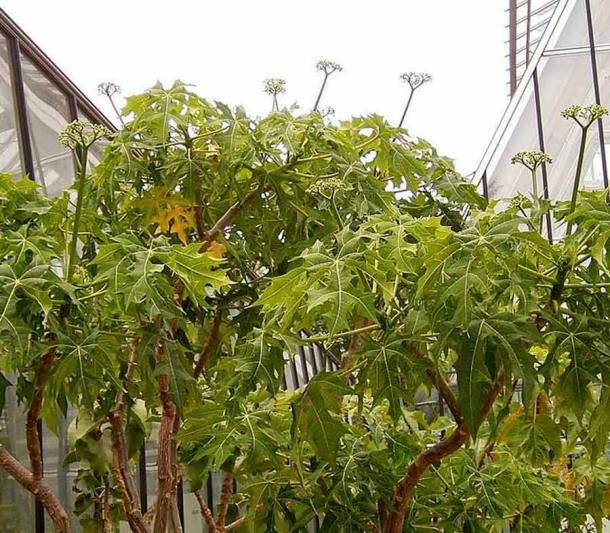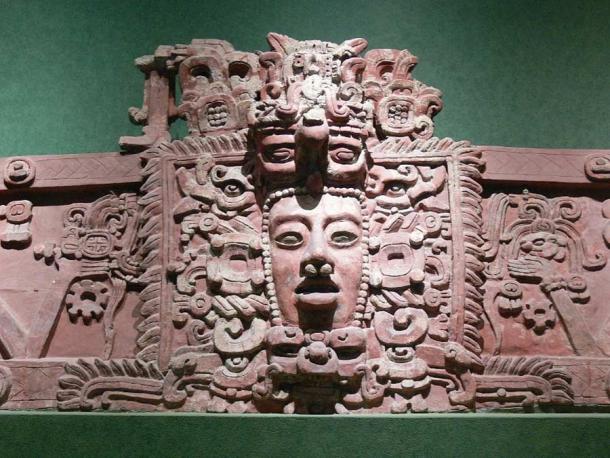Did the great Maya civilization collapse because of drought-related crop failures and starvation? New research has raised significant doubts about the viability of that theory, which in recent years has been the most widely accepted explanation for the late-first millennium fall of the Maya Empire in southern Mexico and northern Central America.
Evidence collected from the climatological record shows that in the late ninth and 10th centuries, when the rapid decline occurred, the Maya civilization experienced multiple prolonged droughts. Those droughts were made worse by widespread deforestation, which was a consequence of the need to cultivate more land to grow more crops to feed a growing population at a time when crop yields were dropping because of low rainfall. All of this set up a vicious cycle, it has been claimed , where food production became more and more difficult to sustain, and mass starvation became inevitable.
Putting two and two together, scholars concluded that climate change and its environmental consequences would have made it extremely difficult for the Maya to preserve their civilization. They would have begun to abandon their great cities as a result, seeking refuge in the surrounding areas (some of which remained occupied by Maya people who were not as badly affected by the droughts).
According to a new study published by the Proceedings of the National Academy of Sciences , however, these scholars have gotten the math all wrong.
Maya Plant Diversity and its Protection Against Drought
It had been assumed that mass starvation likely occurred in Maya territory because the people were highly dependent on drought-sensitive crops, specifically corn, squash, and beans, to survive. But an analysis by two University of California-Riverside professors, archaeologist Scott Fedick and plant physiologist Louis Santiago, has revealed that during its Classic Period (250 to 900 AD), the Maya civilization had access to nearly 500 edible plants, many of which would have been largely unaffected by declines in rainfall.
“Even in the most extreme drought situation—and we have no clear evidence the most extreme situation ever occurred—59 species of edible plants would still have persisted,” Santiago said in a UC-Riverside press release .
Two plants that would have been particularly useful were cassava, which produces nutritionally rich edible tubers, and chaya, a domesticated shrub that is still consumed by the Maya today. The latter’s leaves are high in essentials like iron, potassium, and calcium.
“Chaya and cassava together would have provided a huge amount of carbohydrates and protein,” Santiago confirmed.

Leaves of Chaya (Frank Vincentz / CC BY-SA 3.0 )
Fedick launched the initial stage of this new research project by compiling and publishing a list of all the potentially edible plants that were known to the ancient Maya. He then recruited Santiago to help him analysis the drought-resistant capacities of all the 497 types of plant species he’d identified.
“When botanists study drought resistance, they’re usually talking about a specific plant, or a particular ecosystem,” Fedick pointed out. “One of the reasons this project was so challenging is because we examined the dietary flora of an entire civilization—annuals, perennials, herbs, trees, domesticates, and wild species. It was a unique endeavor.”
A unique endeavor indeed—and one that has produced some highly intriguing results. It seems the Maya could have altered their production and harvesting practices to increase the availability of food crops that wouldn’t have been affected much by even long-term drought conditions. In fact, previous research has shown the Maya had already experienced drought conditions earlier in the Classic Period, and had survived them by making adjustments in their agricultural practices .
Fedick and Santiago can’t say exactly why people began to abandon Maya cities around 900 AD. While not discounting environmental and climate-related causes entirely, they are certain more was going on.
“One thing we do know is the overly simplistic explanation of drought leading to agricultural collapse is probably not true,” Fedick said.
If the Maya failed to exploit the potential of drought-resistant crops as much as they could have, other factors must have been involved that prevented or discouraged them from doing so.
What Really Happened to the Maya Civilization?
Maya civilization may have collapsed for a number of reasons .
For example, new religious or prophetic movements may have damaged societal cohesion or threatened the established order, causing internal strife that was highly divisive. Corrupt or inept leaders may have lost legitimacy, leading to civil war or widespread immigration from formerly occupied territories. Warfare, either civil or with outsiders, may have become chronic and led to disillusionment with the direction of Maya society. There may have been natural disasters or disease outbreaks not yet detected in the geological or archaeological record that led to depopulation or desertion of Maya territory.

National Museum of Anthropology in Mexico City. Maya mask. Stucco frieze from Placeres, Campeche. Early Classic period (Wolfgang Sauber / CC BY-SA 3.0 )
Climate change may very well have played a significant role as well. Even if droughts weren’t decisive, they may have disrupted certain critical industries, leading to economic recession or depression that rulers struggled to manage, and regular citizens had a hard time surviving. The deforestation associated with the droughts may have been more destructive than the droughts themselves, causing shortages of wood that made life increasingly difficult to support or sustain.
The commitment of Maya leaders and citizens alike to maintain and preserve their social, political, economic, metaphysical, and cultural traditions despite the odds and obstacles may have gradually waned, as a result of a combination of factors such as these. Dissatisfaction with the direction of Maya society and growing concern about the future may have reached a boiling point, leading to what seemed like a rapid and sudden collapse.
Archaeologists, anthropologists, historians, seekers inspired by Maya spiritual traditions, and the surviving Maya people themselves will continue to search for clues that might offer more insights into why the once mighty Maya civilization fell, several centuries before the arrival of the Spanish conquistadores who destroyed the civilizations of other indigenous peoples. Definitive answers will likely never emerge, but that won’t discourage those who are determined to get closer to the truth.
Top image: Temple of Kukulcá n, Chichen Itza, Mexico. Source: Pixabay
By Nathan Falde
 RSS Feed
RSS Feed















 January 7th, 2022
January 7th, 2022  Awake Goy
Awake Goy  Posted in
Posted in  Tags:
Tags: 













